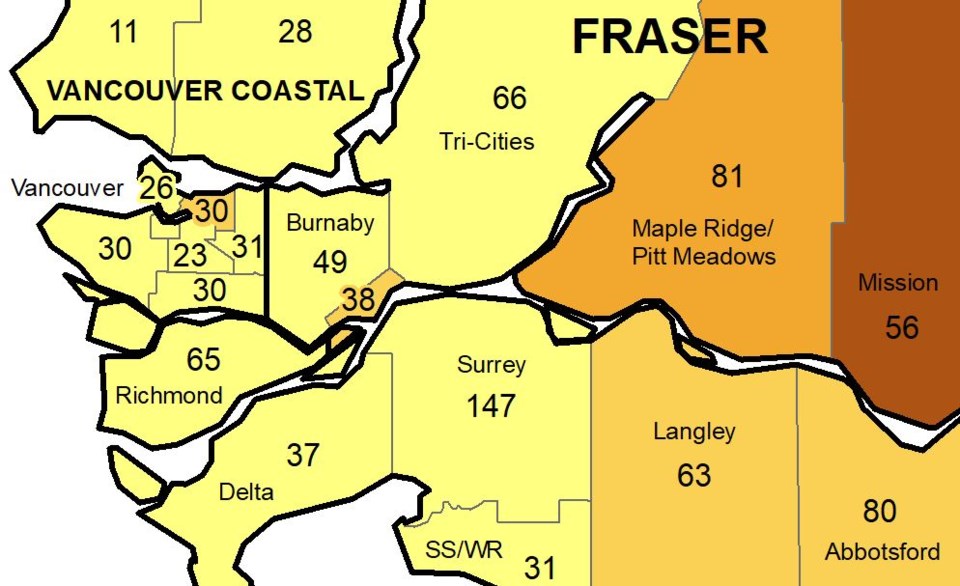Compared to other parts of the province, the Tri-Cities is still doing OK when it comes to reducing the spread of COVID-19.
The region remains in double digits, however, there were 66 local cases found across Coquitlam, Port Coquitlam, Port Moody, Anmore and Belcarra in the latest report provided by the BC Centre for Disease Control (BCCDC).
That's a 27 per cent increase and 14 more infections compared to 52 detected the week of Nov. 21.
The data is collected and released to the public for Geographic Distribution of COVID-19 by Local Health Area of Case Residence.
The current number remains the same as it was from back in the summer — specifically early August when 45 cases were found.
A month ago, the Tri-Cities recorded more than 100 local COVID-19 cases and have since stayed below that plateau on a week-over-week consistency.
As well, it's not unusual for cases to rise slightly in the Tri-Cities and drop again the following week, a pattern that has been seen in recent weeks.
However, with the Omicron variant now present in the province, keeping an eye on trendlines becomes increasingly important.
On Tusday (Dec. 7), provincial health officer Dr. Bonnie Henry announced there were five people who tested positive with the Omicron variant.
All five known Omicron patients in B.C. are believed to have contracted the virus while travelling internationally. None of the five has an illness severe enough to need hospital treatment. Two of the five patients are unvaccinated, Henry told media.
Meanwhile, in the Fraser Health region, Surrey is still B.C.'s "hotspot" for the virus (147). The Fraser Health communities that follow are Maple Ridge/Pitt Meadows (81) and Abbotsford (80).
In terms of vaccinations, the BCCDC is currently reporting a 90 per cent double-dose average for the Tri-Cities, and 92 per cent for single doses among eligible residents aged 12 and older.
The region is also at a 59.4 per cent average for third jabs against COVID-19 for eligible residents 70 and older, and 10 per cent for aged 12 and up as of this publication.
About 8.5 per cent of kids aged five to all in the Tri-Cities have received their first dose against the virus.
For information on vaccination clinics in the Tri-Cities, you can visit Fraser Health's website.
THREE DOSES BETTER THAN TWO?
Pfizer released preliminary data on Dec. 8 indicating three doses of its COVID-19 vaccine neutralizes the Omicron variant — a mutation of the SARS.CoV.2 virus that has spread to dozens of countries around the world and that scientists worry could prove more infectious and more resistant to vaccines.
The preliminary laboratory studies, which have not been peer reviewed, also indicate two doses of the Pfizer-BioNTech vaccine “may not be sufficient to protect against infection with the Omicron variant,” according to a statement from Pfizer.
Pfizer and BioNTech added that they believe those vaccinated with two doses “may still be protected” against severe Omicron infections.
“Our preliminary, first dataset indicate that a third dose could still offer a sufficient level of protection from disease of any severity caused by the Omicron variant,” said BioNTech CEO Ugur Sahin in a written statement.
“Broad vaccination and booster campaigns around the world could help us to better protect people everywhere and to get through the winter season.”
Since Nov. 25, the companies have been working on an adapted vaccine that will give people a high and prolonged level of protection against the Omicron variant.
They say they have “high confidence” it will be ready by March 2022 and expect to produce four billion doses.
- with files from Stefan Labbé, Glacier Media, Glen Korstrom BIV





